Britain's top landscape architects on how to make your garden fit perfectly into the world around it
You can't just plant what you like and just expect it to work in sympathy with its setting — it needs a bit of careful thought. Juliet Roberts spoke to five top garden designers to get their tips.
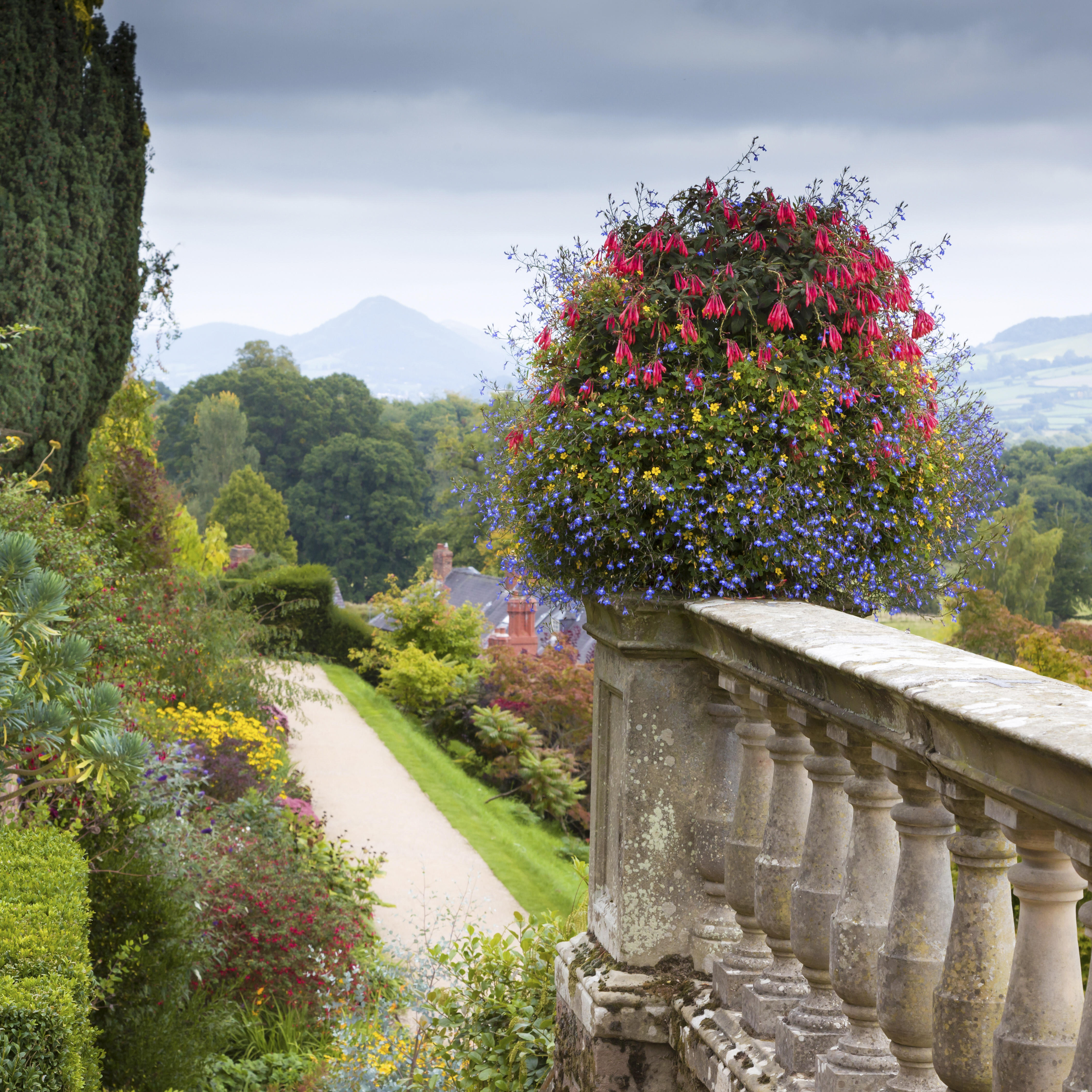
The best gardens are undoubtedly those that are both beautiful to the eye and a pleasure to use. Although they should reflect their owner’s sense of style, it’s important that a garden also has a strong sense of belonging to its surroundings.
Award-winning landscape architect Tom Stuart-Smith says there are no fixed rules about how best to fit a garden into the landscape. There are, however, key issues to take into account, as we discovered when speaking to Mr Stuart-Smith and five other experts: Arne Maynard, Julie Toll, Jinny Blom, David Wheeler and Simon Dorrell.
First, consider the horizon and the views you’d like to lead the eye to or away from. Next, think about the hierarchy of how you view the foreground, the middle distance and the backdrop of the landscape, and don’t forget scale and proportions.
Consider materials and how they can make a connection with the local vernacular and, finally, think carefully about your palette of plants and how they can meld the garden into the landscape.
Bear in mind that what you decide to put in can be as important as what you take out. Simon Dorrell, co-owner of Bryan’s Ground in Herefordshire, puts it succinctly: ‘Adhere to Arts-and-Crafts principles: observe and respect the local vernacular, use local materials and embrace Nature and you can’t go wrong.’
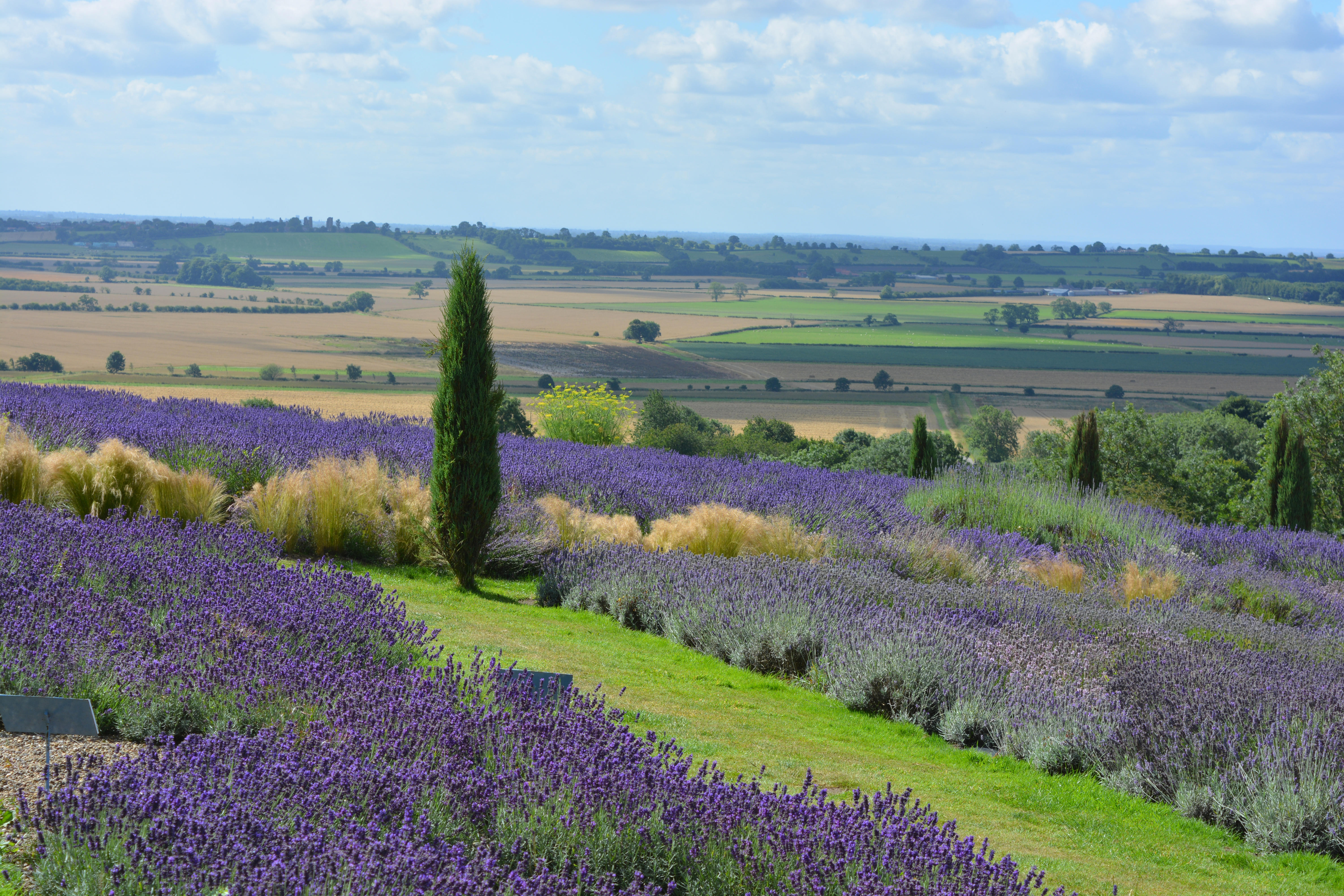
Key advice on fitting your garden into its landscape
- Observe how the house and its garden sit within the landscape. Think about curtilage and carefully define the limits of the garden and the hierarchy of order in which you view the space.
- Analyse the horizon. How far away is it? What does it offer? Do you want/need to see all of it or only some of it? What are your principal views?
- Research and respect the local vernacular and use materials that relate to the landscape.
- Think about how planting can be used to make the connection between the formal spaces and the landscape. For everything to feel comfortable, the boundaries need to be blurred, so that the wilder landscape slowly merges with the cultivated garden.
- Beware of horticultural incontinence! Avoid planting too many exotics or too complicated a mix of plants just at the point where things need to resolve.
- Think about benches which visitors can sit facing in either direction, allowing them to experience the view out of or the view into the garden.
- Don’t be afraid of dealing with scale. In order to tie the landscape to a garden, you may have to be bold and seemingly ‘waste’ a certain amount of garden space to bring the relationship into being.
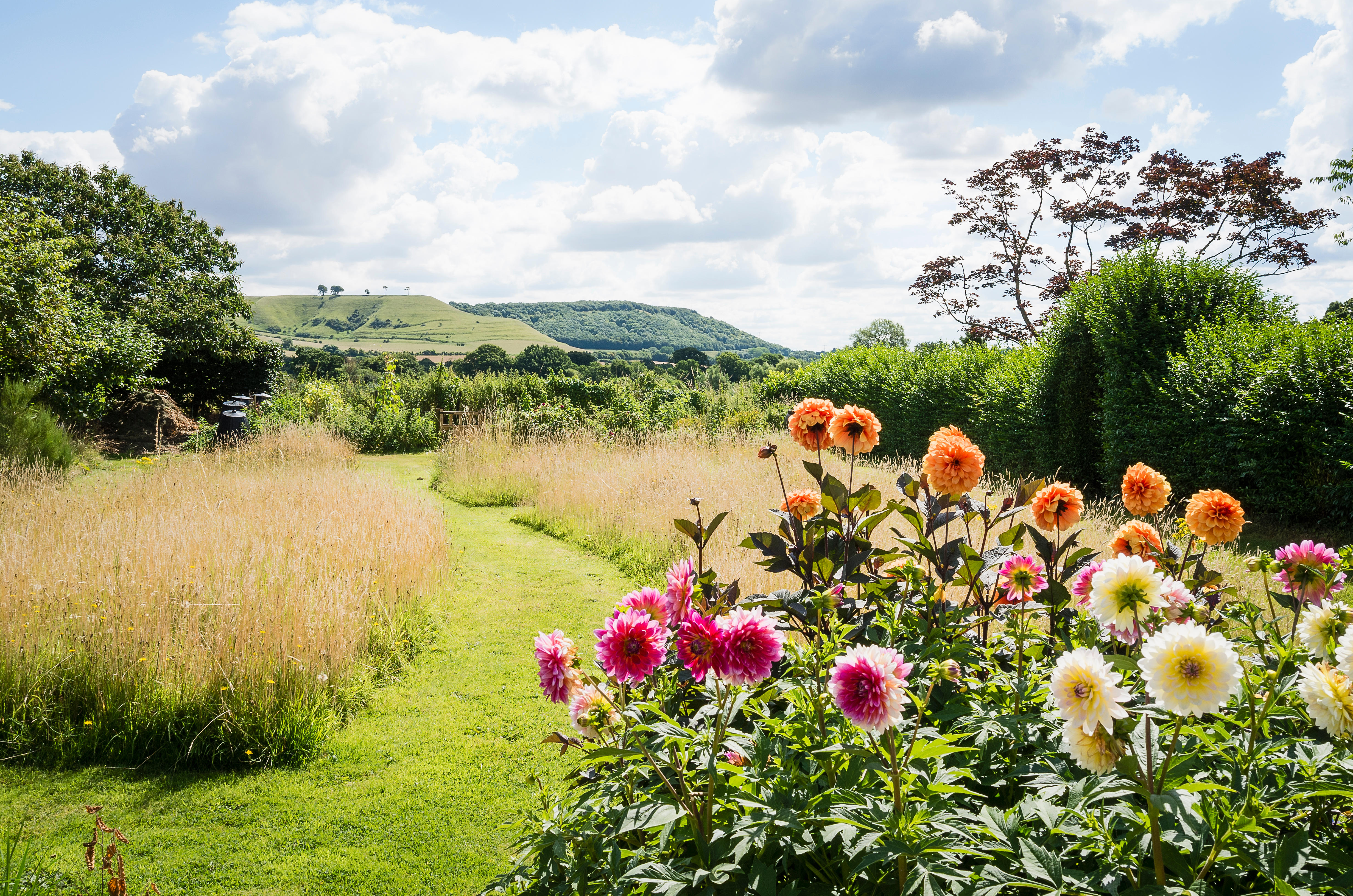
What to plant
- Wild plants that work well in a formal setting can help tie a garden to the country beyond. For example: primrose (Primula vulgaris), red campion (Silene dioica), stinking iris (Iris foetidissima), stinking hellebore (Helleborus foetidus), foxgloves (Digitalis purpurea), teasels (Dipsacus fullonum) and cow parsley (Anthriscus sylvestris).
- Multi-stem trees are particularly useful. If you have even just one in the garden and a couple in the landscape, the eye picks up on the connection. Julie Toll recommends trying hazel, hawthorn and apple.
- Shrubs native to the UK, such as Viburnum opulus, give a natural look, as do wilder-looking roses. Those with good hips, including Rosa canina and R. rugosa, are particularly useful, as they give a longer season of interest.
- Wildflower-meadow seed mixes are great for large expanses, but always choose a mix appropriate to the conditions. It’s worth mowing pathways so you can walk with ease through wilder areas and Miss Toll recommends doing several different heights of cut, as this encourages a wider range of wildlife. She also recommends putting in plug plants along the path’s edge.
Our experts on their favourite gardens which blend into the landscape
Tom Stuart-Smith — Mount St John, North Yorkshire
To make the most of the breathtaking views from this North Yorkshire garden, Tom Stuart-Smith levelled the site considerably, created a series of terraces (with lawns to accommodate marquees) and removed several large trees. ‘Wagner said that much of the art of composition in music is the art of transition,’ says Mr Stuart-Smith. ‘The same can be said about gardens: how we move from one place to the next, from one mood to the next, from one season to the next.’
Exquisite houses, the beauty of Nature, and how to get the most from your life, straight to your inbox.
David Wheeler and Simon Dorrell – Bryan’s Ground, Herefordshire
With 13 vistas that lead from the formal gardens into the landscape, Bryan’s Ground is a superb case study in the craft of establishing an intimate relationship between house and landscape. Many of the views from this garden focus the eye and concen-trate the mind on a distant feature, such as a church, hill, tree or livestock. In this photo-graph, a simple wooden structure and bench, known as Bridie’s Lightbox, ‘takes possession’ of the view by squarely framing it.
Arne Maynard — Allt-y-bela, Monmouthshire
When he diverted a stream at Allt-y-bela in Wales, designer Arne Maynard realised he’d inadvertently built a natural stage area behind his studio barn. By creating an amphitheatre of curved ‘grassy benches’ on the slope facing it, he not only enabled guests to watch theatre performances in comfort, but also formed a charming, understated connection between the formal and informal parts of the garden.
Jinny Blom – Chalkland Farm, Buckinghamshire
Designed to be viewed from above, this series of consecutive garden spaces was inspired by the forced perspective found in medieval illuminated manuscripts. The rounded box balls, yew pyramids and froth of roses echo the shapes of trees in the distant landscape. ‘The aim was to draw in the surrounding landscape and blend it with the new gardens,’ explains designer Jinny Blom.
Julie Toll – Farmhouse, Hertfordshire
At this estate in Hertfordshire, designer Julie Toll was asked to create a connection between the formal moated gardens around the farm- house and the landscape beyond. Her response was to plant the field next door as a wild-flower meadow and put in a large pond.
The spoil from the pond was used to create mounds, on which she planted trees that further linked the garden to the landscape — and screened a new housing development.

Credit: Jackson-Stops
A sprawling estate that includes not one but two magnificent country houses
It's not often that great country houses come to the open market in Cheshire — but two have arrived at once
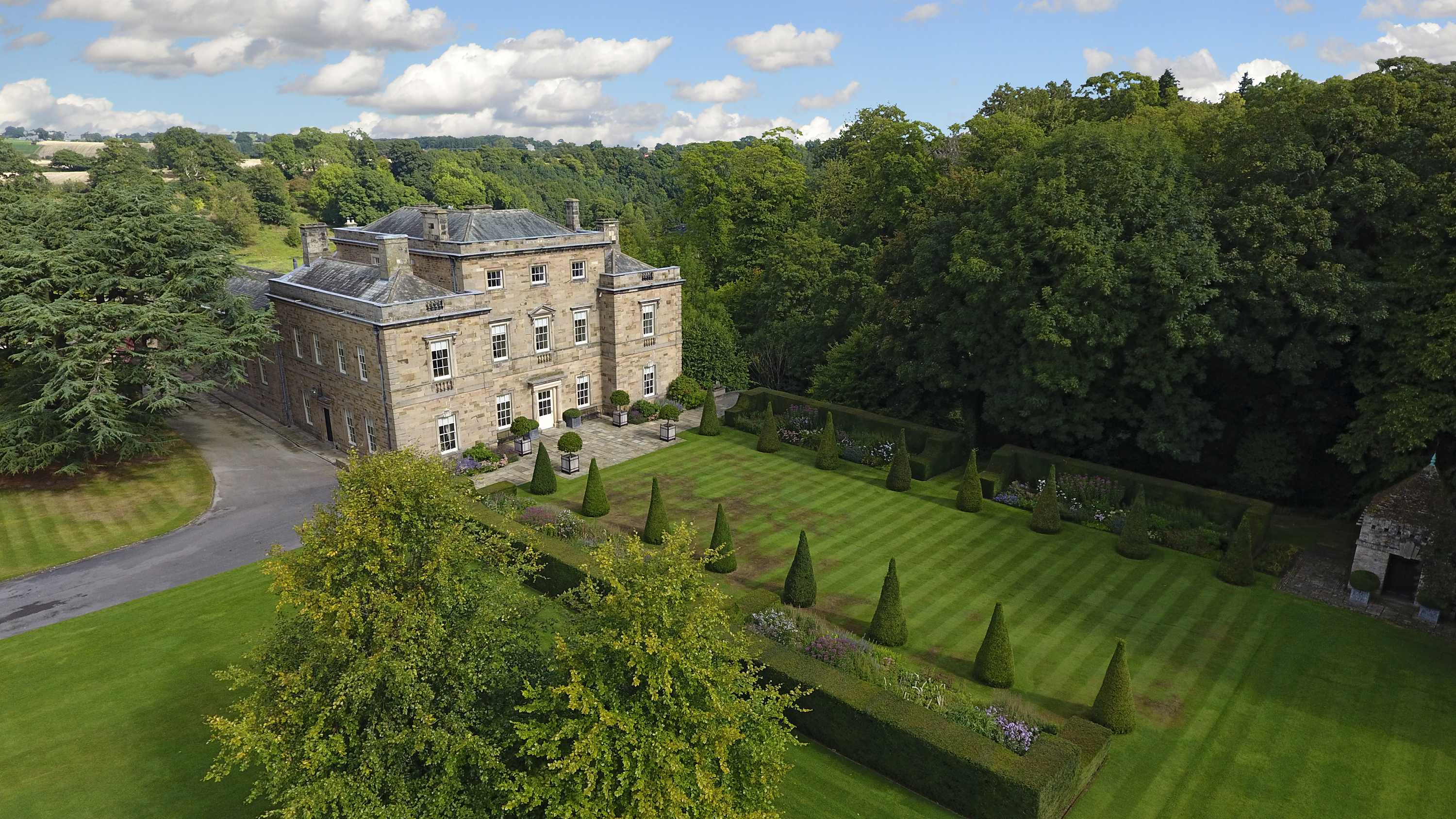
Credit: Savills
A vast Georgian home that’s been immaculately restored, with gardens by a man who’s won eight gold medals at Chelsea
Wycliffe Hall, the very picture of a grand Georgian country house, and has been treated to money-no-object restoration in the
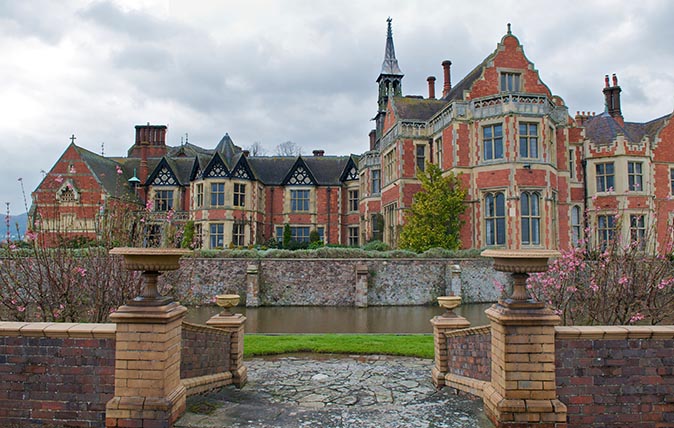
Madresfield Court: A Worcestershire garden where new and old combine in perfect harmony
Steven Desmond visits Madresfield Court in Worcestershire, where high Victorian romanticism has been blended with modern ideas to create a

Chisenbury Priory: A handsome and quirky streamside garden developed over decades
Tim Longville discovers how successive owners and artists have made their mark on the grounds of an ancient streamside property.

The best garden designers and landscapers in Britain
A beautiful country house is as much about its surroundings as its bricks and mortar, something that the best garden
Toby Keel is Country Life's Digital Director, and has been running the website and social media channels since 2016. A former sports journalist, he writes about property, cars, lifestyle, travel, nature.

